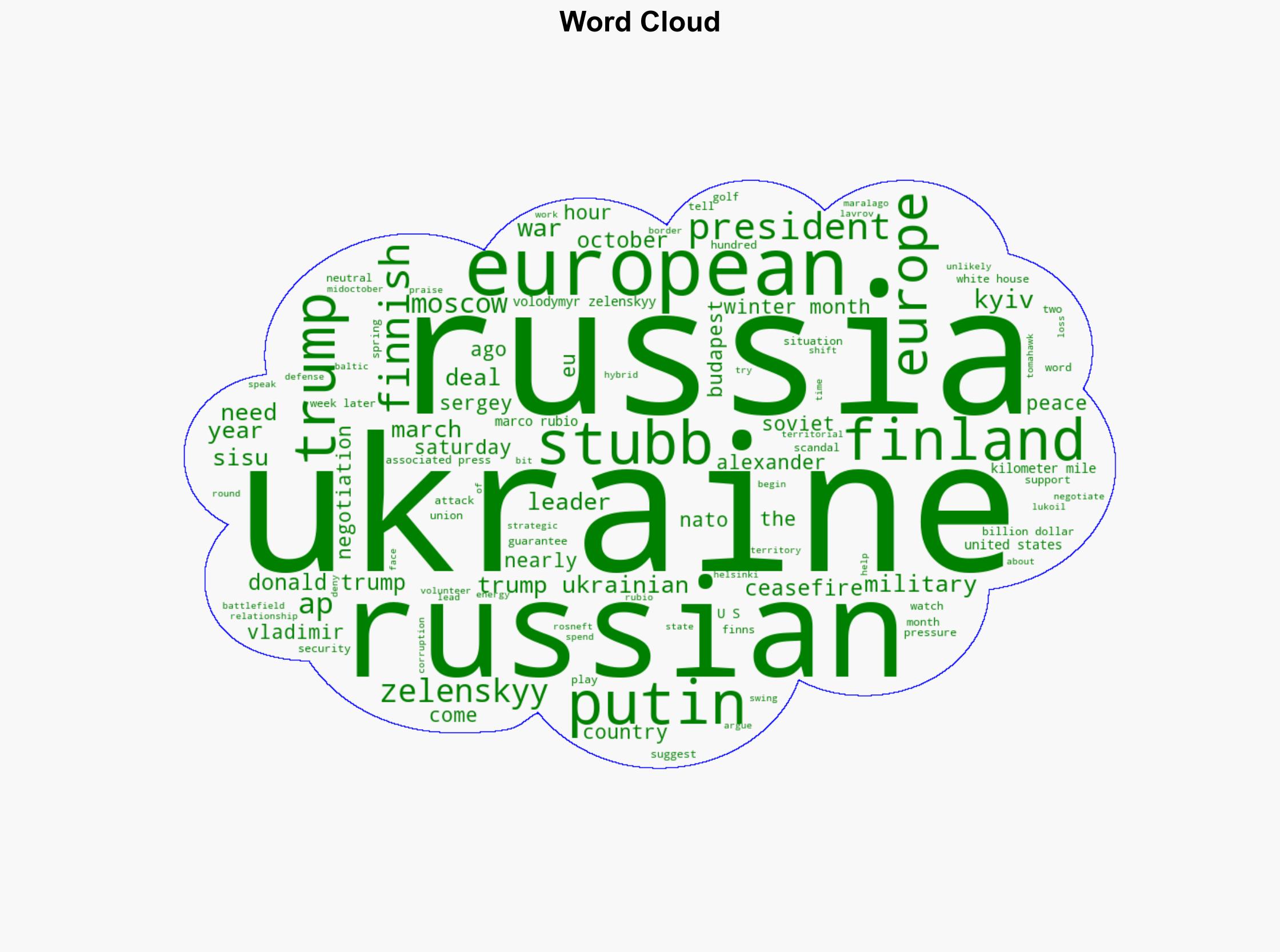Finlands president warns no ceasefire likely soon in Ukraine urges Europe to hold its nerve – PBS
Published on: 2025-11-16
AI-powered OSINT brief from verified open sources. Automated NLP signal extraction with human verification. See our Methodology and Why WorldWideWatchers.
Intelligence Report:
1. BLUF (Bottom Line Up Front)
The most supported hypothesis is that Finland’s President Alexander Stubb’s warning about the unlikelihood of a ceasefire in Ukraine is a strategic call for European unity and resilience against Russian aggression. This aligns with Finland’s historical context and current geopolitical stance. Confidence Level: Moderate. Recommended action is for European nations to bolster support for Ukraine, both militarily and economically, while preparing for prolonged conflict.
2. Competing Hypotheses
Hypothesis 1: President Stubb’s statement reflects a realistic assessment of the current geopolitical climate, emphasizing the need for European endurance and resilience (sisu) in the face of ongoing Russian aggression.
Hypothesis 2: Stubb’s warning is a strategic maneuver to galvanize European support for Ukraine by highlighting the potential for Russian exploitation of European divisions and internal Ukrainian corruption.
Hypothesis 1 is more likely due to Finland’s historical experiences with Russia and its recent NATO membership, which underscores its commitment to collective European security.
3. Key Assumptions and Red Flags
Assumptions include the belief that European unity is critical to countering Russian aggression and that internal Ukrainian issues can be managed without derailing international support. A red flag is the potential for Russian disinformation campaigns to exploit European divisions and Ukrainian corruption scandals.
4. Implications and Strategic Risks
Failure to maintain European unity could lead to a weakened collective response to Russian aggression, increasing the risk of further territorial gains by Russia. Economic and military support for Ukraine is crucial to prevent a protracted conflict that could destabilize the region further. Cyber and informational threats from Russia remain significant risks.
5. Recommendations and Outlook
- Enhance European military and financial support for Ukraine to deter further Russian advances.
- Strengthen cybersecurity measures to protect against Russian hybrid warfare tactics.
- Encourage transparent governance in Ukraine to mitigate the impact of corruption scandals.
- Best-case scenario: Increased European support leads to a stalemate, forcing Russia to negotiate.
- Worst-case scenario: European divisions and Ukrainian corruption lead to Russian territorial gains.
- Most-likely scenario: Prolonged conflict with intermittent escalations, requiring sustained European resilience.
6. Key Individuals and Entities
Alexander Stubb, Volodymyr Zelenskyy, Donald Trump, Vladimir Putin, Marco Rubio, Sergey Lavrov.
7. Thematic Tags
Structured Analytic Techniques Applied
- Cognitive Bias Stress Test: Expose and correct potential biases in assessments through red-teaming and structured challenge.
- Bayesian Scenario Modeling: Use probabilistic forecasting for conflict trajectories or escalation likelihood.
- Network Influence Mapping: Map relationships between state and non-state actors for impact estimation.
Explore more:
National Security Threats Briefs ·
Daily Summary ·
Support us
·





